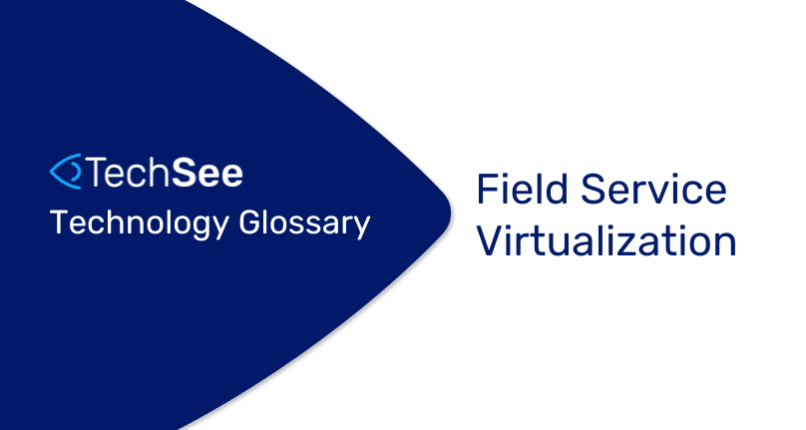What is Field Service Virtualization?
Field Service Virtualization is a cutting-edge technology and operational model uses visual remote support to virtualize, streamline and enhance various aspects of field service management.
Key Components of Field Service Virtualization:
- Virtual Technicians: Field service virtualization empowers organizations to deploy virtual technicians who can remotely diagnose, troubleshoot, and guide on-site customers or technicians. This reduces the need for physical presence and minimizes response times.
- Visual Support: One of the central aspects of field service virtualization is visual support. It enables real-time video and image sharing between customers or on-site technicians, customers and remote experts. This visual collaboration enhances issue resolution accuracy.
- Remote Training and Guidance: Organizations can use field service virtualization to provide remote training sessions for their field service personnel. This ensures that technicians are equipped with the latest knowledge and skills, improving overall service quality.
Why Field Service Virtualization
- Cost Reduction: By minimizing the need for physical dispatches and reducing downtime, field service virtualization leads to significant cost savings. Travel expenses, response times, and operational overhead are all reduced.
- Reduced Carbon Emissions: Fewer dispatches and replacement parts required can dramatically reduce the field service organization’s carbon footprint.
- Enhanced Customer Experience: Quick issue resolution and the ability to interact visually with technicians enhance the overall customer experience. Customers appreciate the speed and accuracy of virtual support.
- Data Analytics: Field service virtualization systems collect vast amounts of data. This data can be analyzed to identify trends, predict maintenance needs, and optimize resource allocation.
- Increased Efficiency: Operations become more efficient due to faster issue resolution and reduced travel times.
- Improved Accuracy: Visual support ensures problems are accurately diagnosed, that the right resources are dispatched and issues are properly resolved.
- Scalability: Virtualization allows for easy scalability to meet growing service demands.
What Technology does Field Service Virtualization Require?
To support a Field Service Virtualization deployment, several key technologies and components are essential:
- Visual Assistance Platform: This platform typically enables real-time video and image-sharing, along with annotation and augmented reality tools. It forms the foundation for visual collaboration between remote experts and on-site technicians or customers.
- Mobile Apps or Web-Based Interfaces: Field technicians and customers often use mobile applications or web-based interfaces to connect with the visual assistance platform. These interfaces enable easy access to visual support, allowing users to share live video feeds, capture images, and communicate with remote experts.
- Camera-Equipped Devices: To enable visual communication, field technicians require camera-equipped devices such as smartphones, tablets, or wearable tech like smart glasses. These devices capture and transmit real-time visuals, allowing remote experts to assess situations accurately.
- Network Infrastructure: A robust network infrastructure is crucial to ensure seamless communication between on-site devices and remote experts. High-speed internet or mobile data connectivity is essential to support live video streaming and data exchange.
- Offline Support Automation: There are always scenarios in which a field service technician or customer cannot access a reliable, high-speed internet connection. Offline guidance capabilities, typically offered as SDKs, are required to support users in these scenarios.
- Augmented Reality (AR) Technology: Integrated AR technology superimposes digital information, annotations, or instructions onto the live video feed or visuals. This helps remote experts guide technicians more effectively and enhances the troubleshooting process.
- Data Security Measures: Given the sensitive nature of field service data, robust security measures are essential. Encryption, user authentication, and data access controls are crucial to protect customer and operational data.
- Integration Capabilities: Standalone solutions often struggle to drive meaningful user adoption. Integrating into the technician and customer environments, as well as the contact center software solutions will often improve adoption, utilization, and performance.
- Artificial Intelligence (AI): AI, and particularly computer vision AI dramatically improves service accuracy and efficiency, automating information retrieval, diagnostics, user guidance and job verification.
- Analytics and Reporting: The ability to collect and analyze data is critical for continuous improvement.
To learn more about TechSee’s field service virtualization technology and how we can help your enterprise, schedule your complimentary consultation today.





